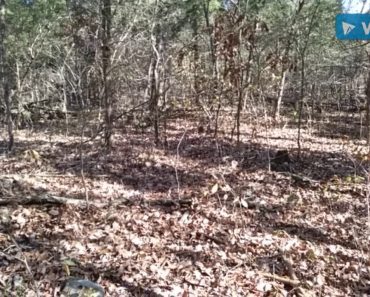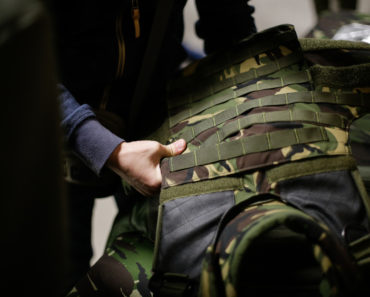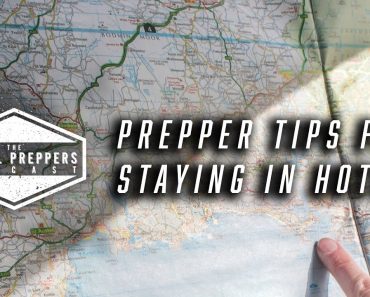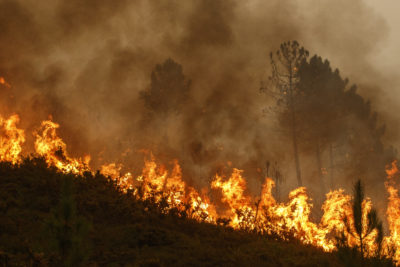
The reality of surviving a forest fire is much worse than hearing of it from a distance.
The tragic forest fires that have struck California are one more reminder of how dangerous the forces of nature can be. That something which started out so small could wreck such massive devastation, totally leveling one town, is hard for the mind to grasp. But the reality of surviving a forest fire is much worse than hearing of it from a distance.
Wildfires can strike anywhere. The Chicago fire of 1871 burned for three days, destroying four square miles of the city, including the business district. According to legend, that fire was started by a cow kicking over a lantern. Even so, it caused over $200 million in damages in 1871 dollars. That’s roughly $4.1 billion in today’s dollars. This is still a small amount compared to the damage caused by the Camp Fire in California. Nonetheless, the Chicago fire was so famous that it’s still talked about today.
The Destructive Power Of A Forest Fire
As with many disasters, fire pits man against nature with nature holding all the cards. As we can see in the case of this fire, or in the case of any hurricane, the sheer size of natural disasters makes it extremely difficult for mankind to battle, even when using our largest machines.
Fighting these fires is a task best left to the professionals who have the training and equipment to do so. The best that any of us can hope to accomplish is simply surviving a forest fire. Even that can be a rather tricky proposition, as many in California have already discovered.
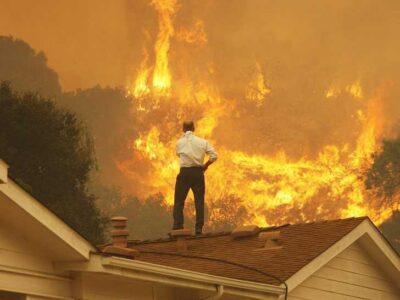
Surviving A Forest Fire
There are three basic ways that a fire can kill us:
- Burn us
- Asphyxiate us
- Through smoke inhalation
Fortunately, few people are actually burnt to death, which would be a horrible way to go. Most die of smoke inhalation, although some are asphyxiated by the lack of oxygen as the fire consumes all of the oxygen available. Old wisdom tells us to get down near the floor, or in this case, the ground, so that you can breathe. This advice is very important here, as taking such a simple measure can save your life. However, it has to be used in conjunction with other important measures.
We can break these methods of surviving a forest fire down into two basic categories: active and passive.
Surviving A Forest Fire: Passive Measures
Passive measures are the preference as they carry the least amount of risk. This means getting yourself to a place of safety where the fire can’t reach you. I’m not talking about a fireproof building here. Rather, I’m referring to something that nature herself provides which will protect you from the fire.
As much as possible, you want to get to low ground. This is because the chance of finding oxygen is better, as well as the likelihood that you can be below the smoke. Nevertheless, you also need to get somewhere that the fire itself can’t reach you. That means finding someplace where you are hidden in fireproof material.
This is harder than it might seem, as a forest fire can leap as much as 100 feet when driven by the wind. Of course, it will only leap in the direction that the wind is driving it. So, it is more important to have distance between you and the direction the fire is coming from than it is to have distance between you and the downwind side of your fireproof area.
Water
Water is the best possible means of surviving a forest fire. This is attested to by the fact that firefighters use it to extinguish fires. Water works in two ways: first to put out fire by taking the heat out of it. Secondly, by smothering the fuel so that the fire doesn’t have access to oxygen.
Since water won’t burn, hiding in the water will provide you with the best possible protection from the fire. Not only that, but it can protect you from the heat of the fire as well. Water is drawn to low points by gravity and the heat caused by the fire rises. For this reason, the water won’t warm up significantly.
Obviously, the bigger the body of water, the better. Notwithstanding, if all you can find is a stream, make use of it. You should find the widest and deepest part and get in it. Avoid getting in somewhere where you can’t stand up, though. This is because the water will draw heat out of your body and possibly cause hypothermia. If you are in water too deep to stand in, that could prove fatal as you might not be able to swim.
Stone
Another thing that won’t burn is stone, at least not at the temperature of a forest fire. Consequently, you should try to find a stone outcropping, rockslide, or even a stone cliff face. These are safe places to be as well. Just make sure that you are not in a place where overhanging branches can fall on you.
Another thing to watch out for in any stone area is the little bit of foliage that is there. It’s common to find grass and other plants growing between the stones, all of which can burn. While that burn probably won’t be dangerous, you may find that you have to put out a number of small fires just to protect yourself.
Meadow
While not as good as stone, hunkering down in the middle of a meadow is better than being in the midst of the forest. This should be the case as long as the meadow is big enough to offer you protection from flying fire. While grass will burn and dry grass will burn very quickly, it won’t burn as intensely as the trees will.
You can improve on this somewhat by taking the time available to you and clearing an area of grass to stay in. Either pull the grass out by the roots or cut it off close to the ground. Even if there is a little left to burn, that will be a much smaller fire to deal with than when tall, dry grass burns. You could literally put it out by stepping on it.
Underground
Going underground is another solution that isn’t all that great. Still, it’s better than getting caught if you can find someplace to do so. Without a doubt, a cave would be ideal if you know where one is. Yet, even a culvert under the road can provide pretty good shelter as the fire can’t really get to you there. Since you will be low to the ground, you’ll have air to breathe and all you’ll have to deal with is heat.
Roads
Roads are probably the worst place to shelter from a fire. This simply stems from the fact that they usually aren’t wide enough to offer much protection unless you’re talking about a superhighway. In that case, getting into the median will probably get you far enough away from the fire to offer you some safety.
Even though roads are a poor protection from a forest fire, they are certainly better than nothing. Get as close to the downwind side of the road as possible so that you have as much room as you can between yourself and the fire.
Surviving A Forest Fire: Active Measures
Hopefully, you’ll be able to get by with only passive measures. If not, there are a couple of active measures that you can employ. It’s important to note, however, that these are riskier than the passive ones. As a result, you’ll want to use passive measures if at all possible.
Creating A Firebreak
Probably the best active measure when surviving a forest fire is to create a firebreak if you can. I alluded to this when I was talking about pulling up or cutting grass in a meadow. Creating a zone of non-flammable material to stop the fire is a very effective measure if you can perform this task.
There are two things that make this hard for you to accomplish: space and time. If fire can leap 100 feet through the air, then the only way to make a fire break that you are sure is going to work is to make one that is 100 feet wide. That’s going to be a challenge and it’s going to take a lot of time. About the only way that you can do this effectively is if you have heavy equipment to work with.
Starting A Backfire
A simpler, but more dangerous method of creating a firebreak is to start a backfire. One of the most famous methods that firefighters use consists of clearing an area by burning off the vegetation before the fire can get to it. Then, when the fire arrives, it will self-extinguish due to the lack of fuel.
The key to making any backfire work is to be able to control the fire. If you can’t, then all you will accomplish is to get the fire to your doorstep faster. That definitely won’t help. For your purposes and mine, this means limiting a backfire to grass rather than trying to burn trees. We just don’t have the means of putting out a tree that is on fire.
Dependable Emergency Solar Backup Power, When The Grid Fails.
Surviving A Forest Fire By Walking Through It
The other challenging method that is quite useable is to simply walk through the fire. Any fire is going to burn unevenly due to differences in terrain, vegetation, and even soil conditions. The key here is to find a place where the fire will either be burning slower or won’t burn as efficiently.
Ideally, you would want to find an area where there will be a fast burn right next to an area that will burn slowly. As the fast burn passes by, there will be a gap in the fire until that slow burn area can catch up. That gap is what you want to exploit by slipping through the fire line while the gap still exists. There will still be hot spots, but you will be in an area that is pretty much burned off.
If you can douse yourself with water or cover yourself with something that is fairly fireproof while doing this, it will be to your advantage. There will be sparks flying, which may land on your clothing. If you are holding something over you to act as a shield, like a canvas tarp or a blanket, you can discard it if it catches fire.
You may also enjoy reading an additional Off The Grid News article: 15 Proven Ways To Protect Your Off-Grid Home From Wildfires
Do you have any other tips or suggestions on surviving a forest fire? Let us know in the comments below.



